Cathy Horyn
Fashion Critic at Large, Flower Farmer at Heart
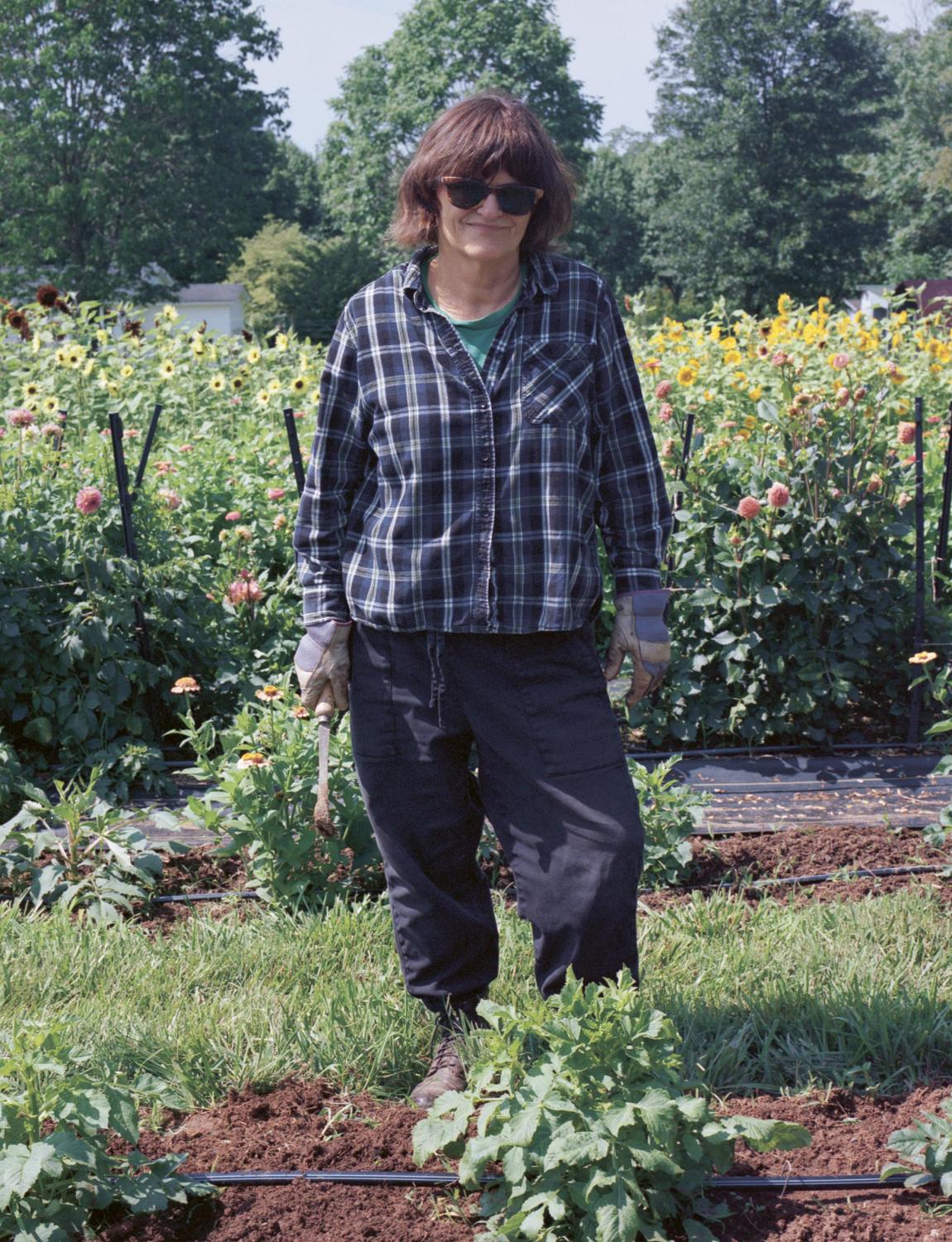
As fashion’s most discriminating critic, Cathy Horyn is admired by readers and insiders alike for her runway dispatches, whose occasional bracing candour has seen her blacklisted by industry practitioners. While she continues to file the kind of truth-telling journalism with which she made her name at titles including The New York Times and Vanity Fair, Cathy has devoted much of the past decade to conquering a new field — or fields — down at her prospering Miniver Farm in deepest Virginia. No need for stilettos here — it’s bush-hogging season.
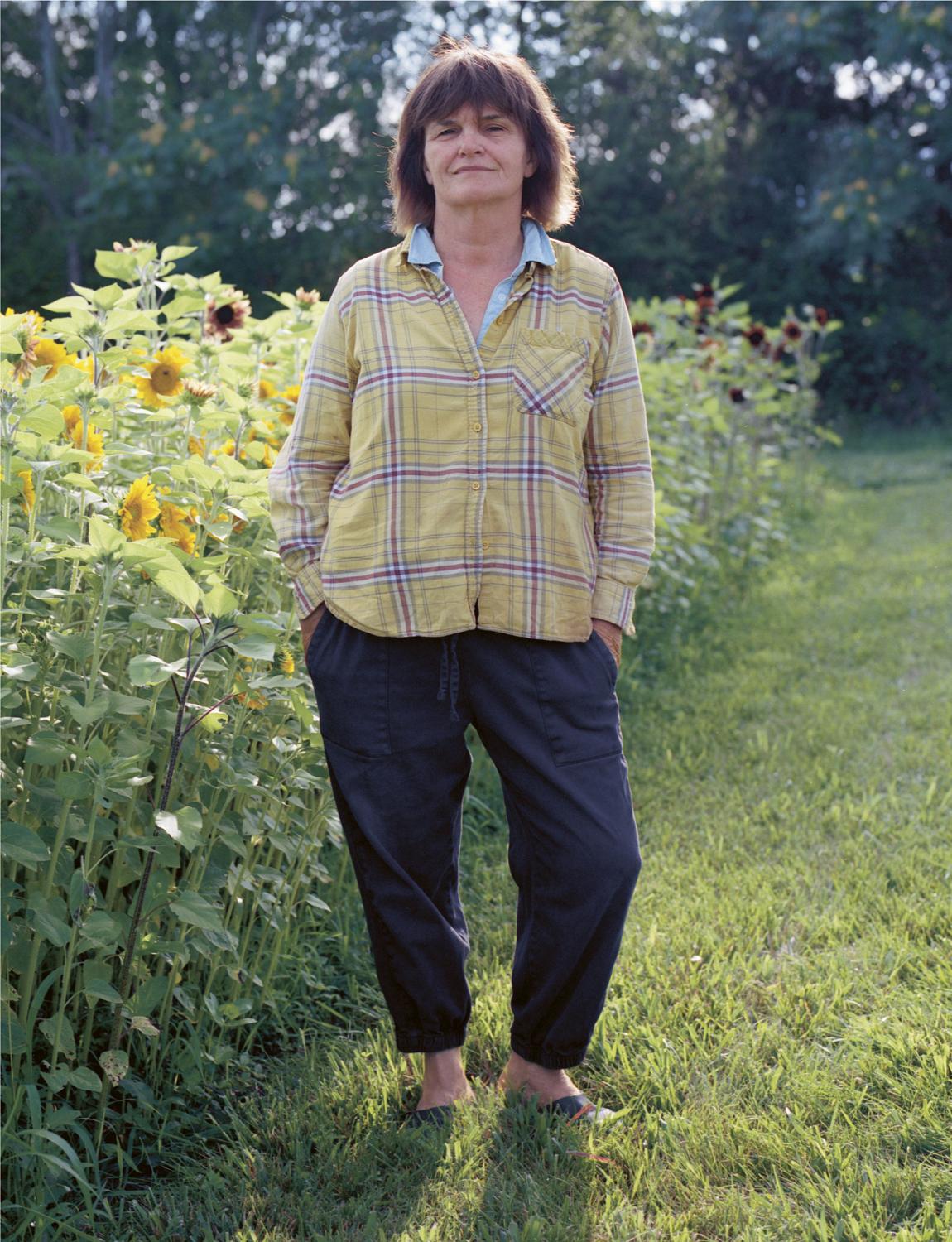
Cathy Horyn is the most feared and most fearsome fashion critic working. It is a position she has occupied, more or less unchallenged, for 25 years. Fashion criticism is a declining art, currently practised by only a handful of writers at the handful of newspapers, magazines and websites still willing to pay for it, but Cathy has lost none of the sharpness of her eye – or her bite. She is a finely honed blade. She abhors mealy-mouthing and unnecessary exposition. The best journalistic advice she ever received, from her father, a newspaperman before her, was to cut all her copy by 50 per cent. Her stabs are short and sharp, and so is her praise. Though she has occasionally found herself the target of a designer’s public pique, more than a few of them have confided to me that hers is the opinion they most want to hear.
Cathy had never written about fashion when, in the summer of 1986, she replied to an advertisement for a “fashion writer, no experience necessary” at The Detroit News. She wrote two sample stories (one on the heretical mixing of navy and black, the other on the hip pads her mother used to sew into her clothes in the 1940s – the 1980s was the padded era of Thierry Mugler) and got the job. That same year, she went to her first European collections. It was a different world then. The fashion shows were not live-streamed mass entertainments, but they were big business, and a raft of regional newspapers sent correspondents to cover them. It “used to intimidate the hell out of me,” Cathy said. “It was frightening.”
There were clear cliques. American Vogue, Women’s Wear Daily and The New York Times were at the top, and it wasn’t long before Cathy found herself among them, jumping first to The Washington Post, then to the starry Vanity Fair of the 1990s (she profiled Leonardo DiCaprio and Brad Pitt at home, among others), and finally to The New York Times, which she joined in 1998. Her first piece as critic there, published in January 1999, is a small masterpiece of hard-won intel and urbane authority. “Just about everyone who comes to the haute couture collections knows that Nan is Nan Kempner, that Deeda is Deeda Blair and that Liliane Bettencourt, who was seated Wednesday in the front row at the Yves Saint Laurent show and wearing an orange muffler, is the richest woman in France. They may or may not know that the youngest couture customer at Givenchy is all of 8, or that Dodie Rosekrans, the San Francisco art patron and couture stalwart, recently bought a full-size guillotine covered with the Chanel logo for her home in Venice. But give them time. Paris is probably the only place on earth where the world’s rich, titled and tucked can always count on being connected, if only through clothes.” This is vintage Horyn (pronounced as in the horn of Gabriel).
Cathy worked for The New York Times (where she and I missed being colleagues by a single day) for 15 years, and she is now critic at large for The Cut at New York magazine (where my timing was better and we now are). She has, throughout that time, been an undisputed authority on the fashion industry yet also stayed at a slight remove from it (it is hard to imagine another critic who could have made such a stir attending shows in an old pair of cutoffs). So it shouldn’t be a surprise – though even to many in the industry it probably is – that Cathy has spent the past five years commuting to the shows in New York and Paris (and occasionally London and Milan) from a rural community in Madison County, Virginia, an hour’s drive from the nearest international airport. For Cathy Horyn, who once had an haute couture suit made for her by Chanel, is, in her (extremely semi-) retirement, a farmer.
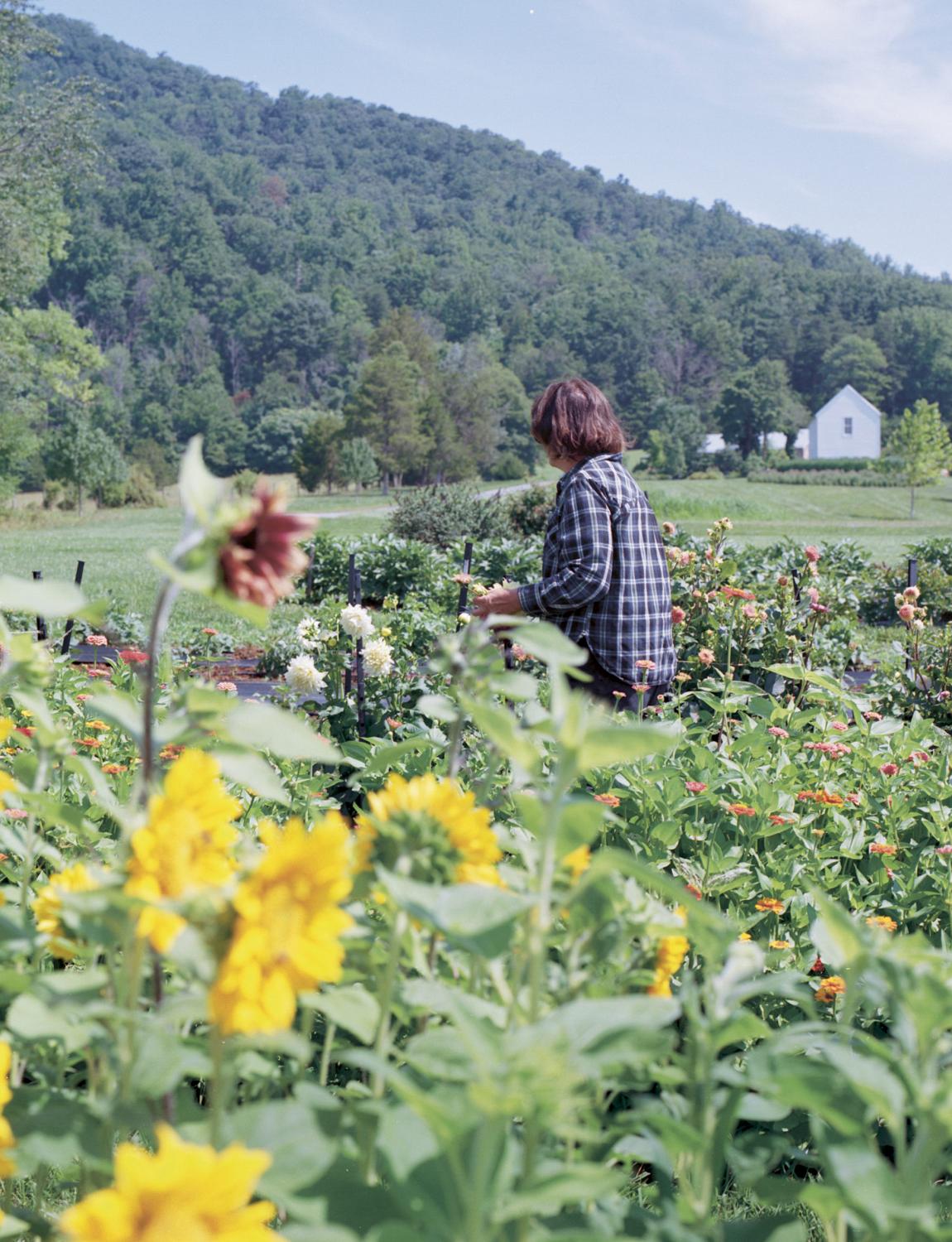
“People still respect an opinion. They want to hear criticism, they want to hear reflective thought.”
Cathy’s farm, which she bought in 2016, covers 100 acres at the foot of Allen Mountain, an area patrolled by hawks and eagles as well as sparrows and bluejays. “It goes halfway into that field, up the mountain and over that hill,” she explained as we walked the land one June afternoon. She has lived in Virginia full-time since late 2016.
The farm is an old place – there is a little cemetery on the property whose occupants were interred around the time of the American Civil War – but Cathy has rebuilt it and christened it Miniver Farm, after the 1942 William Wyler film Mrs Miniver, about a British family living in the countryside during the Second World War. There is a fashion connection – “She goes and buys this fabulous hat,” Cathy said – and an incidental gardening connection: someone in the film enters a “Miniver rose” in a competition. But mostly Cathy just liked the sound of the name. Of everyone she asked, only the fashion consultant Amanda Harlech knew of the film.
In any case, Cathy is no Mrs Miniver. She mows her own fields with her zero-turn mower and hauls her own spoils with a Gator, an ATV that makes me realise that Bottega Veneta’s signature green was John Deere’s signature green first. Cathy keeps no animals except for Murray, her three-year-old black lab. She grows dahlias, peonies and tulips in 80-foot beds. Last year she planted a wider variety of flowers, “but I’m better off doing a big thing of peonies, a big statement of dahlias, and throw in some sunflowers and zinnias, because they’re easy.” The flowers, once picked, get the spa treatment in Cathy’s air-conditioned house while they wait to go to their final destinations. She sells (and hand-delivers) them to local florists, mostly for weddings. Brides prefer pink and white, so that is mostly what Cathy grows.
Hers is a small business. She follows a number of young women running much larger farms and is impressed by their efforts but doesn’t want to compare herself with them. “If I was 20 years younger, I might think that way,” she said, but at 67, she is content to manage her business as a gentlewoman’s farm. (Not that she cares for that description, since her flower operation sustains itself financially.)
Cathy does everything on the farm herself, from weeding and watering to bush-hogging. “This is my tractor with a bush hog on the back. Bush-hogging is a term for cutting big fields. Let’s say the field was full of brambles – that mower can go over it. You’d wreck your zero-turn by doing that.” She told me a story of when her friend Teri Agins, a former fashion reporter at The Wall Street Journal, visited. “She asked, ‘How many hands do you have working for you?’ I said, ‘These two.’” Cathy laughed. “This is it.”
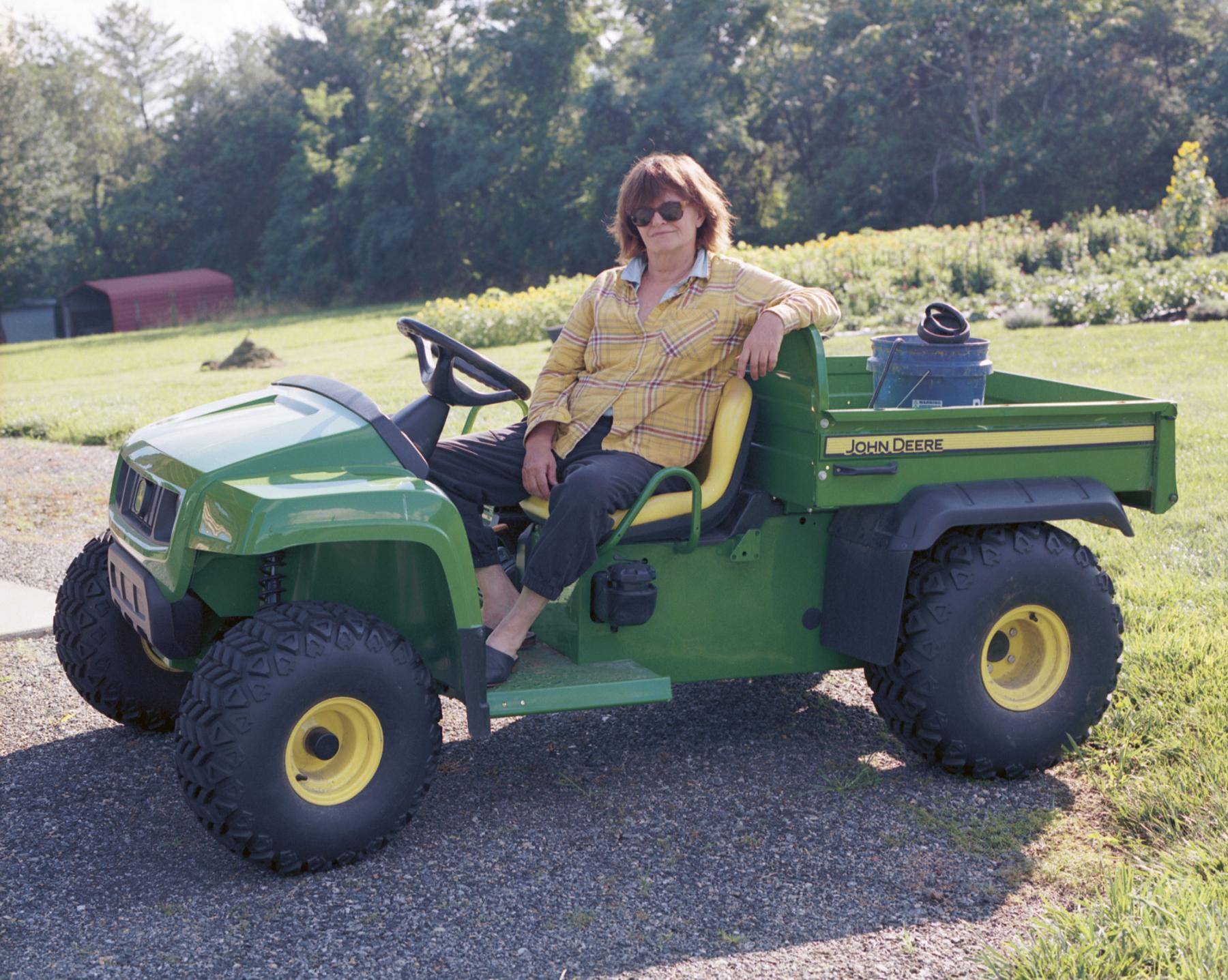
The soil in this part of Virginia is clay, so Cathy has added a lot of compost for drainage and plant growth.
Cathy and Murray live in a single-storey stone house. Her son, Jacob Ogden, 38, a photographer, spent part of the pandemic with them before moving to Los Angeles in 2021. She designed the house with David Bers, a Brooklyn architect. Mary Wolf, a Charlottesville landscape architect, did the grounds. The original house on the property was built in 1817. “It wasn’t great, but what I didn’t know was that the bones in the house were amazing,” Cathy said. “I got a local reclaimer, Craig Jacobs, who stripped it to the frame. We kept all the stone from the chimneys and the foundation, piled it up near the cemetery.” Once the house was stripped, Cathy explained, “Craig pointed up to the roof and said, ‘This is the best thing in this whole building, those boards, and you should keep them.’ And we did.” The sheathing boards, “probably late 18th-century”, and limewashed to mute the yellow of the pine, became her bedroom floor. The stone, predominantly Piedmont, was used for the exterior of the house, along with West Virginia sandstone.
The house is filled with beautiful antique American furniture, much of it passed down from her family: her four-poster bed (“I’ve got my childhood bed in the basement”), a Queen Anne dresser, her mother’s cherrywood sideboard, “made in the Shenandoah Valley about 1800.” Her life in fashion mostly hides in her office, at one side of the long, straight house. It is hung with 20th-century photographs – a wonderful one of the model Donna Jordan smoking, by Bob Richardson (Terry’s father); a Lee Miller (“Taken during the war in Paris”); a Jacques-Henri Lartigue of a Jack Russell on a beach – and a framed paper maquette from Alexander McQueen’s last collection, a gift from Sarah Burton after his death. Outside rest two antique tin urns from the garden of Bill Blass, a present from the late American designer, whose memoir Cathy co-authored. And that about covers it. For the entirety of my visit, Cathy wore a flannel shirt and a pair of joggers. She consulted the Trinity Episcopal Church Recipe Book (“Compiled by the women of the parish,” first edition 1964) – which included lots of recipes, strawberry pie and buttermilk biscuits among them, contributed by her mother, Mrs Eugene (Nancy) Horyn – and cooked a rib-sticking dinner of lamb chops, boiled potatoes and rhubarb tart. She set me to help. When Cathy tells you to peel potatoes, you peel potatoes. We drank a neighbour’s homemade wine.
It would be too easy, not to mention inaccurate, to assume everyone in these parts is a country farmer. Charlottesville, the nearest city and the bustling seat of the University of Virginia – one of America’s top public universities, founded by Thomas Jefferson in 1819 – is only 30 miles away. But Cathy has little contact with this part of Virginia, and no one around her has much of an interest in her off-farm life, she said. “They don’t care. They don’t care about the job that I do, about fashion. They’ll say, ‘Where have you been lately?’ That’s about it.”
At the time of my visit, Cathy had just returned from a trip to Seoul to see Gucci’s cruise collection. She was preparing to go to Paris two and a half weeks later for Pharrell Williams’ Louis Vuitton debut. Doesn’t she get whiplash, I wondered, going from the farm straight to the front row? “Not too much,” Cathy said. “I like the combination. I think it’s good to have a mixture. You know, I feel I’m lucky to be able to get in the car, go to Dulles or go to Washington, jump on the train, go to New York.” When she worked for The New York Times she lived in Garrison, 90 minutes north of Manhattan. She would be at her desk in the old Times building all day, go to as many parties as she could fit in for research at night, and drive back home in the dark, “becoming a different person,” she said. As I walked back to my cottage (Cathy occasionally rents it out as an Airbnb), a June full moon – the type the Algonquin tribes called a strawberry moon – was shining brilliantly orange, and I saw what I never do in New York: stars.
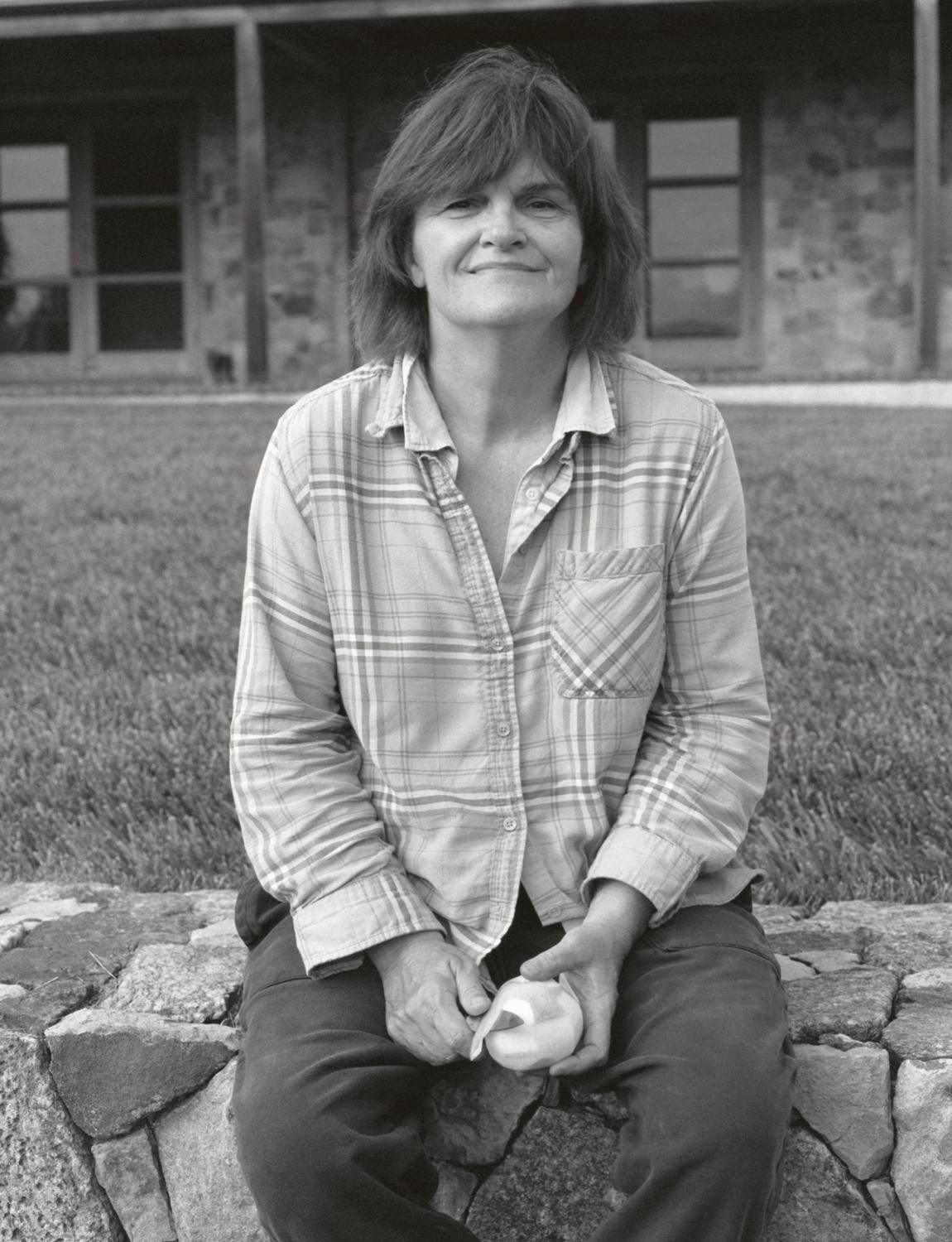
“I like the challenge of trying to figure things out, you know, trying to get better at something.”
Cathy was born in Coshocton, Ohio, a town of 11,000 people. Her father, Gene Horyn, the newspaperman, had moved into advertising. Her mother, who took in Vogue, was a housewife. She went on to become the director of restoration for a small town on the former Ohio & Erie Canal. A brother, Rob, preceded Cathy by two years. “It was a great home,” she said. “We played tennis, we went to dancing school, all of that stuff. I had a horse – two horses. They were in the backyard of a neighbouring family. I would get up every morning and go out riding in the country, out their back gate up into the hills. It’s kind of shocking to me now. If I ever fell off or something happened to me, it’d be goodbye Charlie.” She laughed. “My blacksmith was through the backwoods, down the street. He was right next to the high school football field.”
Cathy went to Barnard College in New York City, where she worked part-time for Diana Trilling, the great mid-century literary critic, writing her correspondence by dictation. Meanwhile, Coshocton, like so many towns and cities in America, was flagging. “All the industry went away,” Cathy said. “It’s the same story over and over again. Let’s say there were five or six primary industries in town – somebody making rubber gloves, a GE plant making phones or something. All those things are gone. In some cases the factories are deserted, or they were levelled. The country club closed. It wasn’t this grand thing, but for a small town it was a real social place to go.”
Cathy went on to study journalism at Northwestern University in Illinois, and after she graduated she applied to 75 newspapers, as she recalls. Two offered jobs: one in Burlington, Vermont, and the other in Norfolk, Virginia, The Virginian-Pilot. She chose the latter and moved to Norfolk, three hours south-east of where we are sitting.
So began her career as a general assignment reporter. She drove all over Virginia, doing stories about any and every topic (some of them on farming and agriculture; peanuts and tobacco were the big crops). It was during this period that she discovered and fell in love with Charlottesville. She would drive there in search of the next story, or to buy antiques. “These things are cemented in you,” she told me. “Charlottesville feels like home the way Coshocton used to.”
And so, after she resigned from The New York Times in 2014 and her ailing partner, Art Ortenberg, a co-founder of Liz Claiborne, died shortly thereafter, she gathered herself up and moved down to the place that felt like home. She had been experimenting with flowers a little already, volunteering her time and her hands at Stone Barns, a farm near her home in Garrison, and then working for $10 an hour at Rock Steady Farm, a cooperative flower and vegetable farm in nearby Dutchess County, bringing home buckets of the blooms they couldn’t sell.
“I think many people just lose touch with their childhood homes,” Cathy told me. “They feel disconnected from them, and they’re happy to adopt Paris or New York or LA. And I feel that way about Charlottesville. I feel like there’s a familiarity about the town, as much as it’s changed. I still feel that it has a rhythm that I recognise. It has a scale. Certain things in terms of the food scene I recognise from 40 years ago. So, as tentative as all that is, as flimsy as all that is, I’ll hold on to that, you know? ’Cause I don’t feel it anywhere else right now.”
Cathy has not left fashion behind. Several times a year, she boards Murray at a kennel and dives back into that world, reviewing the collections, writing features. In the past year, she has profiled Sarah Burton and Jonathan Anderson; in 2020, she corralled almost every designer (Miuccia Prada, Raf Simons, Rei Kawakubo, Stella McCartney, the list goes on) for an expansive package on the “lost season” of the pandemic. The industry still fascinates her. “I still feel really challenged by the whole thing,” she said. “I feel really curious about everything I see at the shows. There’s a sea change happening, and it’s happening right in front of us. It’s about the size of these companies. They’re pushing out so much product. It’s not about the individual designer. What mattered to us, say, 15 years ago – innovative design, craft, new uses or interpretations of craft techniques – probably don’t matter as much because of social media, or influencers, or the way these brands are marketed. It’s hard to get your hands around it.”
Her writing style might have changed slightly with her move to The Cut, but she is as opinionated as ever. Of Alaïa she says, “It’s been hard to like it. You see the gestures of Alaïa and not the substance of Alaïa.” Of the new Burberry, “Now, that was a fun collection to review. It was an interesting show, because there was so much stuff that made no sense. So much stuff that was like, Is that good? Is that bad? Is that kind of cheesy? Is that for the pub? What is that?
“I want to see more impact from young designers, or new designers,” she told me as we sat around her enormous wooden dining table. “I want to go to the shows, whether they’re in London or in Paris, and be excited about a young designer. I can’t say that I am. There’s a lot of OK small designers in all those cities, but no one who’s really got a vision.”
In the face of increasing corporatisation – those giant companies – she has maintained her independence. “I think people still respect an opinion,” she said. “They want to hear criticism, they want to hear comments, they want to hear reflective thought, they want to hear a response to what they’re doing other than, ‘Oh, I think it’s cool.’”
She told me a story about interviewing Helmut Lang in Vienna in the mid-1990s, before he moved to New York. She sat in his office, talking about a collection of semi-transparent dresses that had little strips and straps of lace, like a harness. “I remember saying, ‘Well, what is that, Helmut? What is that reference?’ I tried a bunch of ways. ‘What’s the inspiration?’ And he would never say. I’m sure there was a lot that he could say, but I liked that he didn’t. [It was] ‘Whatever you see, it is what it is.’ I think that that’s a good way of conditioning writers to think for themselves and to see things for themselves.”
Like fashion, flowers have their seasons. They also think for themselves. They change, and they surprise you, and they reward your careful attention, your experience-trained eye. They teach you their own rhythms and language, build up the careful gardener’s vocabulary and expertise. Like fashion, they fascinate Cathy. “The great thing about peonies and dahlias is that you have the stock already,” she said. “It’s in the ground. If you take care of it, you’ll have it the next season and you can add to it. And there’s always demand for that.” Between March and October, when she is not abroad, she is out in her fields every day. She starts at 5.30 in the morning and is usually in bed by 8pm. “Everybody wants the life that they want,” she said, “and you figure out how to get it. I like the challenge of trying to figure things out, you know, trying to get better at something. There’s just very little that would intimidate me now.”
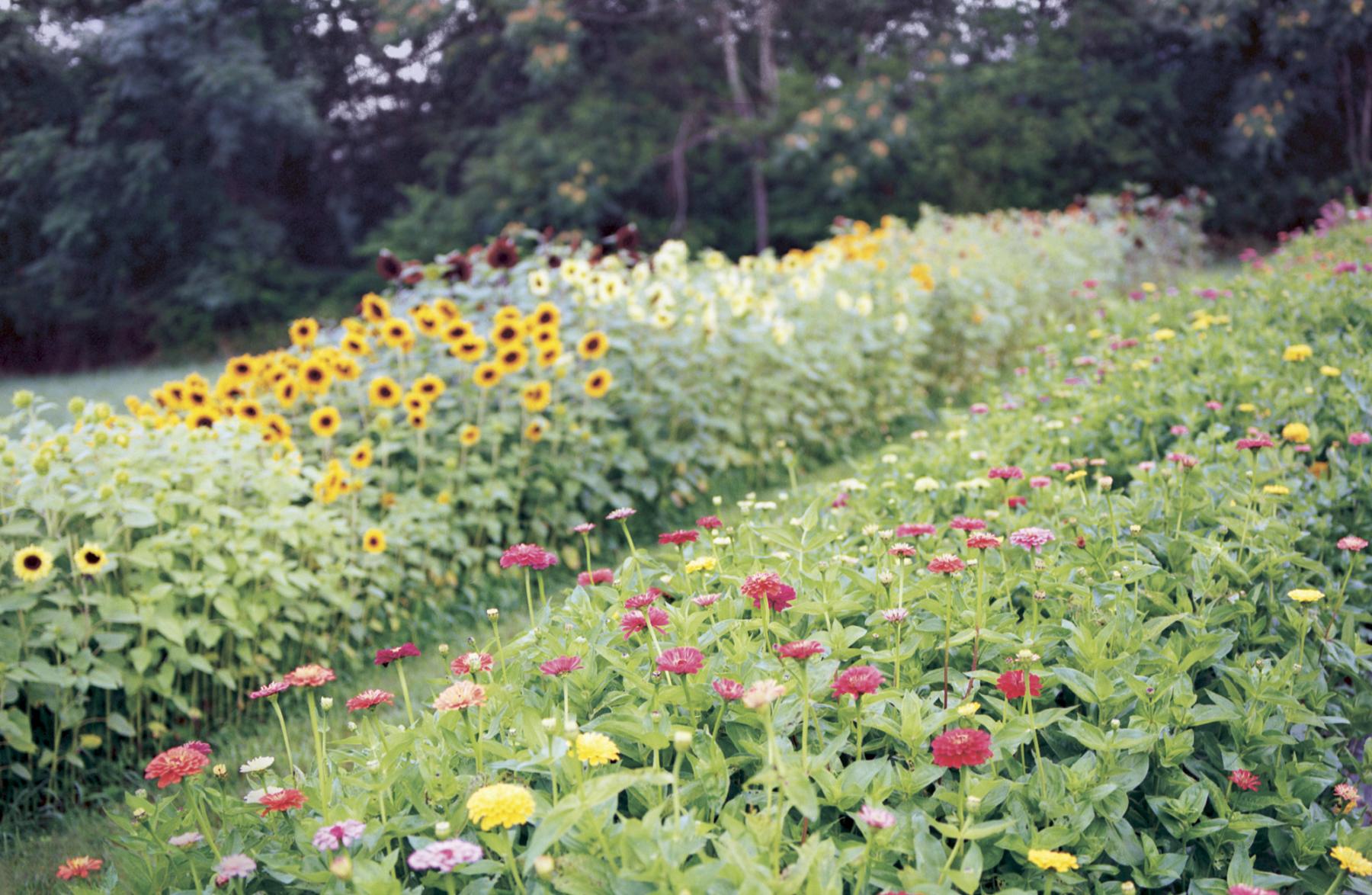
At Miniver Farm, Cathy keeps a patch for sunflowers (in six colours) and one for zinnias, which she considers fantastic in every way. (“Great range of colours. They put out all summer and have a decent vase life. My customers love them.”)
Matthew SchneierMatthew Schneier is a features writer at New York magazine. A graduate of Yale University, he was previously a staff writer for The New York Times, deputy editor of style.com and a contributor to other venerable Big Apple titles such as The Wall Street Journal, Harper’s Bazaar, Slate and Paper.read more Photography by
Davey AdésidaNigerian-born, New York based photographer Davey Adésida is best known for his considered portraiture, working intuitively with subjects and environments to capture life’s most serene moments. Davey regularly works with publications including Vogue, Dazed, i-D and Fantastic Man, and with brands such…read more